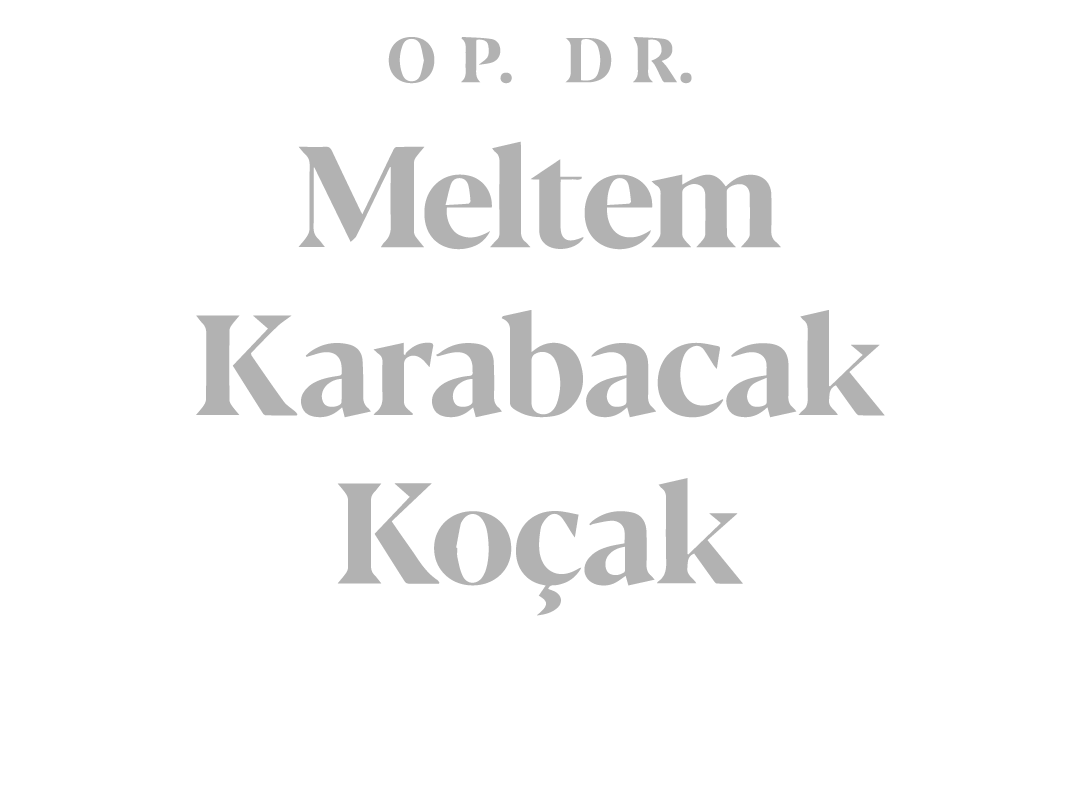CORNEA
The cornea is a transparent and curved tissue located in the front part of the eye, specialized to focus the light and protect the eye from external factors. The front surface of the cornea is the main refractive component of the eye, the other refractive component is the lens. The cornea and lens ensure that light from the external environment is effectively focused on the retina. The refractive power of the cornea is not variable, whereas the refractive power of the lens is variable. In the animal kingdom, the cornea is found in eyes that evolutionarily contain a lens and/or iris. In humans, the cornea is an oval structure that makes up 1/6 of the outer surface of the eye. When measured from the outside, its horizontal diameter is approximately 12.6 mm and its vertical diameter is approximately 11.7 mm. Its thickness is 0.5 mm in the middle and 1.2 mm at the edge. is.
The cornea must be transparent for clear refraction of light, so it does not contain blood vessels in its structure. The oxygenation and nutrition of the cornea is provided by the tear secretion on the outside and the intraocular visual fluid on the inside.
Cornea and iris The cornea contains many nerve fibers in its structure and is very sensitive to external factors. It protects and maintains the health of the cornea with its nerve fibers, blink reflex and supporting properties. The cornea is embryologically of ectoderm origin, like our hair, nails and skin, so it is constantly renewed.
Corneal epithelium
This layer is the outermost layer of the cornea, it consists of five layers of cells, the cells at the bottom and the cells in the limbus surrounding the cornea proliferate and move towards the upper layers, replacing the old cells, so the corneal epithelium is renewed approximately every two weeks.
Outer limiting layer (Bowman’s membrane)
In fact, it is not a real membrane (membrane), it occurs as a result of irregular compression of collagen fibers. Epithelial cells are tightly adhered to Bowman’s membrane, providing structural support to the cornea.
corneal stroma
It is a transparent structure that makes up the thickness of the cornea. It consists of about 100 layers of regularly arranged collagen fibers. It contains sparse cells called keratocytes. When this layer is damaged, healing often leads to loss of transparency and/or changes in corneal curvature, negatively affecting vision.
Internal limiting layer (Desmes membrane)
It is a basement membrane secreted by corneal endothelial cells. After damage or disease, the corneal endothelium is damaged and edema develops in the cornea.
corneal endothelium
It is the innermost layer of the cornea and consists of hexagonal cells arranged in a single layer. Cells are stuck to each other with tight junctions, functioning as a semi-permeable membrane. Thanks to the pump enzymes located on the lateral surfaces of the cells, the water content of the corneal stroma is kept constant. The name endothelium is actually used incorrectly for these cells. These cells are in contact with the intraocular fluid, not with blood or lymph fluid, and their embryological origin is different from the vascular endothelium.
corneal diseases
The cornea, like all living tissues, can be affected by all disease-causing causes. These diseases can be congenital or acquired. The shape, transparency and metabolism of the cornea may deteriorate after some congenital diseases, for example, the cornea may be smaller than it should be at birth, this condition is called microcornea.
A significant portion of acquired diseases of the cornea develop after infection by different microorganisms. Corneal infection can be caused by viruses, bacteria, fungi or protozoa. Corneal infections are called keratitis. The cornea can be affected by autoimmune diseases. While some of these autoimmune diseases specifically affect the cornea and surrounding tissues, some systemic autoimmune diseases can also affect the cornea. For example, rheumatoid arthritis, an autoimmune disease, can threaten corneal health by causing dry eye syndrome.
Some different systemic diseases or systemic infections can also affect the cornea, for example diabetes, which is a systemic disease, can cause basement membrane thickening or nerve damage, causing epithelial openings that do not heal.
The cornea can also be affected by allergic diseases, for example, vernal conjunctivitis, a type of allergic conjunctivitis, can damage the cornea. There are also some dystrophic diseases specific to the cornea, many of which show familial transmission. Keratoconus is a dystrophic disease that manifests itself with thinning of the cornea and resulting severe astigmatism and visual impairment. Some degenerative diseases may also occur in the cornea due to aging and ultraviolet light damage.
Since the cornea is located in the outermost part of the eye, it can often be subjected to trauma. These traumas can be mechanical, thermal, or chemical, and radiation can affect the cornea as well as all tissues. The integrity of the eyeball may be disrupted after corneal trauma, and this is a condition that needs to be treated urgently. The most important thing to do after the eye comes into contact with acid or alkaline chemicals is to immediately wash the eye and surrounding tissues with plenty of water and apply to a medical center with the necessary equipment. In some cases, the eye may need to be washed with liters of water, the eyelids should be turned and any remaining chemical residues must be cleaned.
corneal surgery
Corneal surgery is performed to change the integrity, transparency or optical properties of the cornea. In the late 19th and early 20th centuries, corneal transplantation was unsuccessful, even though many different materials were tried, either synthetic such as glass or organic such as tissues taken from humans and animals. However, now corneal transplantation, in other words keratoplasty, is a transplantation surgery with a high chance of success after the development of surgical techniques, materials and medical treatment in the last quarter of the 20th century.
Today, corneal surgery is commonly performed to correct refractive errors such as myopia, hyperopia or astigmatism. Surgery in which the corneal curvature is changed by making corneal incisions with special micrometric blades is called radial keratotomy. This surgical technique is not as common as it used to be.






